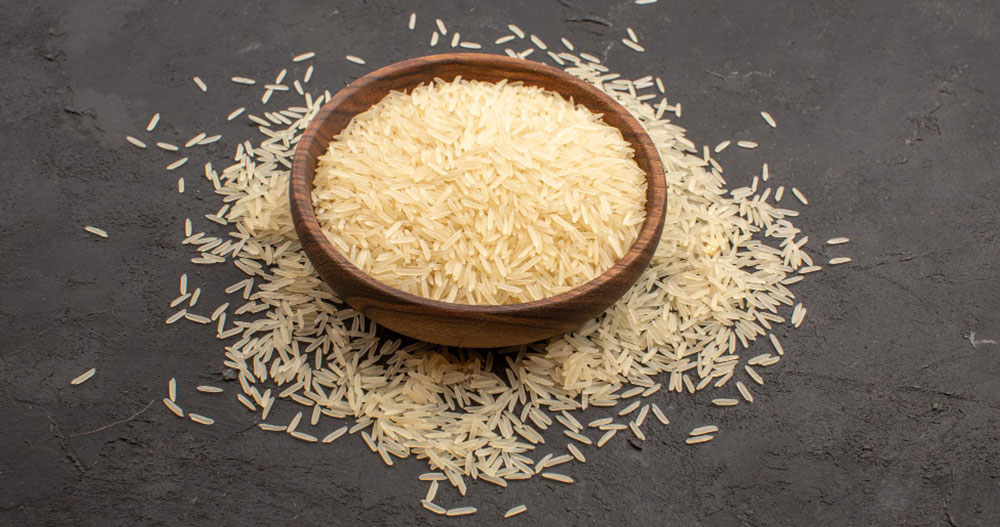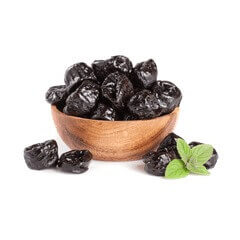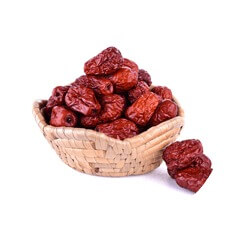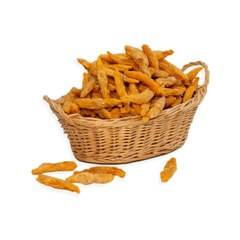Interest in brown rice and, more generally, in whole grains (pasta, bread, etc.) has only grown in recent years. A significant increase in sales of brown rice manifested this renewed interest. It must be said that the benefits of this cereal are far superior to those of its cousin, white rice. More nutritious, with a lower glycemic index, it is deemed better for health.
Why Is Brown Rice Called Brown Rice?
Brown rice is part of the list of so-called whole grains. It is called brown rice because it contains all parts of the rice grain, including the bran, germ, and endosperm. In comparison, white rice is stripped of its bran and germ during refining, leaving only the endosperm. This means that white rice is less nutritious because it lacks certain vitamins, minerals and fibre found in bran and germ.

Bran is the outer layer of the rice grain and contains dietary fibre, B vitamins, and minerals such as magnesium and phosphorus. The germ is the central part of the rice grain and contains B vitamins, vitamin E, unsaturated fatty acids and antioxidants. The endosperm is the largest part of the rice grain and contains mostly starch.
What Are The Benefits Of Brown Rice?
Far from being the most sold in supermarkets, brown rice nevertheless has many advantages that will make you think twice before buying white rice again.
- Unprocessed food: this is an argument that is often underestimated but which is very important. Brown rice does not undergo chemical treatment and does not receive any additives. It is, therefore, unprocessed food which is, therefore, better for our bodies.
- Nutrient-rich: Brown rice is rich in nutrients, including fibre, vitamins B and E, and minerals such as magnesium, phosphorus, and potassium.
- Source of complex carbohydrates: Digested more slowly, it reduces the feeling of hunger, maintains satiety and provides energy.
- Cardiovascular health: The fibre and antioxidants found in brown rice may help reduce the risk of cardiovascular disease.
- Action on type 2 diabetes: it helps regulate blood sugar in people with diabetes due to its lower glycemic index and fibre content.
- Action for the prevention of cancer: studies have shown that the presence of lignans and phytosterols in brown rice makes them cancer prevention foods. Remember that it is recommended to consult a dietitian for people with cancer.
Finally, people who are not used to eating brown rice will be able to vary their diet by incorporating a new cereal that is much richer in nutrients.
What Are The Differences Between White Rice And Brown Rice?
Let’s start with the mode of production to understand the difference between brown rice and white rice. The full version is harvested when the beans reach maturity. Once out of the rice fields, it is cleaned of its impurities before being packaged in sachets. Where white rice is husked from its outer envelope as soon as it is harvested, brown rice keeps the germ and bran in its envelope. It, therefore, does not undergo any major modification between its harvest and its packaging.
It is important to understand that these two kinds of cereal are two very different species. Moreover, it is enough to refer to the colour and the taste to be convinced of it. Brown rice is brown, and its taste resembles that of hazelnut. Conversely, white rice has a neutral taste, devoid of its outer shell, and its nutritional values are also much less important.
Why Is Brown Rice Recommended During A Food Rebalancing?
Food rebalancing is a method of eating better by promoting healthy foods with high nutritional values and, therefore, little processed. It is precisely for this reason that brown rice is recommended during food rebalancing. Among the reasons that lead dieticians to recommend brown rice, it is important to mention 5:
- Nutritional value: unprocessed food, brown rice contains more nutrients, fibre, vitamins and trace elements than white rice.
- Promotes digestion: Its high fibre and trace element content make brown rice an ally of the digestive system. This food is recommended for people with gastric disorders.
- Average glycemic index: White rice has a GI twice that of brown rice. This food will, therefore, not cause a rapid increase in blood sugar.
- Lower in calories: For people looking to lose or stabilize their weight, brown rice is an interesting food because it is lower in calories than white cereals.
- Satiety effect: It avoids small hollows because this food makes it possible to perpetuate the effect of satiety after a meal.

Balanced Plate: With Which Foods To Combine Brown Rice?
In order to create a balanced plate with brown rice, it is important to combine the rice with other nutritious foods to ensure a complete intake of macronutrients (carbohydrates, proteins and fats) and micronutrients (vitamins and minerals). Here are some suggestions of foods to pair with brown rice for a balanced plate:
Vegetables: Vegetables are rich in fibre, vitamins and minerals. Try adding colourful vegetables like carrots, bell peppers, broccoli, spinach or zucchini to your brown rice dish for an extra dose of nutrients.
Protein: Protein is essential for tissue growth and repair, as well as maintaining a strong immune system. You can add protein to your brown rice dish by including beans, lentils, chickpeas, grilled chicken, tofu, eggs or seafood.
Healthy fats: Healthy fats are important for heart and brain health. Add healthy fats like olive oil, nuts, seeds, avocado or grilled salmon to your brown rice dish.
Spices and herbs: Spices and herbs are a tasty way to flavour your brown rice dish without adding empty calories. Add spices like turmeric, cumin or coriander, or fresh herbs like mint, basil or parsley.
By combining these different foods, you can create a balanced and delicious plate with brown rice that will provide you with a variety of nutrients important for your health.
Visit the ADNOOR website for the best long-grain rice, golden Sella basmati rice, brown rice, white rice, Super Kernel Basmati Rice, nuts, seeds, and dried fruits. We take pride in saying that we are the Best Basmati rice suppliers in Montreal and have been the importers, exporters, wholesalers, distributors, and co-packers of various nuts and grains in Canada for the last 25 years. We aim to provide our customers with quality products, so they keep trusting us. So without wasting time, visit our website and order what you need.
2 Comments
Discover Comparison Between White and Brown Rice - Adnoor
April 11, 2023[…] many starchy meals, rice exists in a “delicate” model (white rice) and an “entire” version (whole meal or brown […]








Nutritional Comparison Between White and Brown Rice - Adnoor
April 11, 2023[…] many starchy meals, rice exists in a “delicate” model (white rice) and an “entire” version (whole meal or brown […]